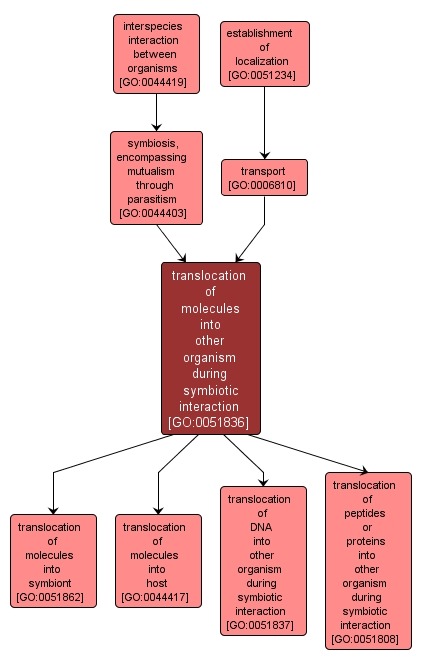GO TERM SUMMARY
|
| Name: |
translocation of molecules into other organism during symbiotic interaction |
| Acc: |
GO:0051836 |
| Aspect: |
Biological Process |
| Desc: |
The directed movement of a molecule(s) produced by an organism to a location inside a second organism, where the two organisms are in a symbiotic interaction. |
Synonyms:
- transport of molecules into other organism during symbiotic interaction
|
|

|
INTERACTIVE GO GRAPH
|














